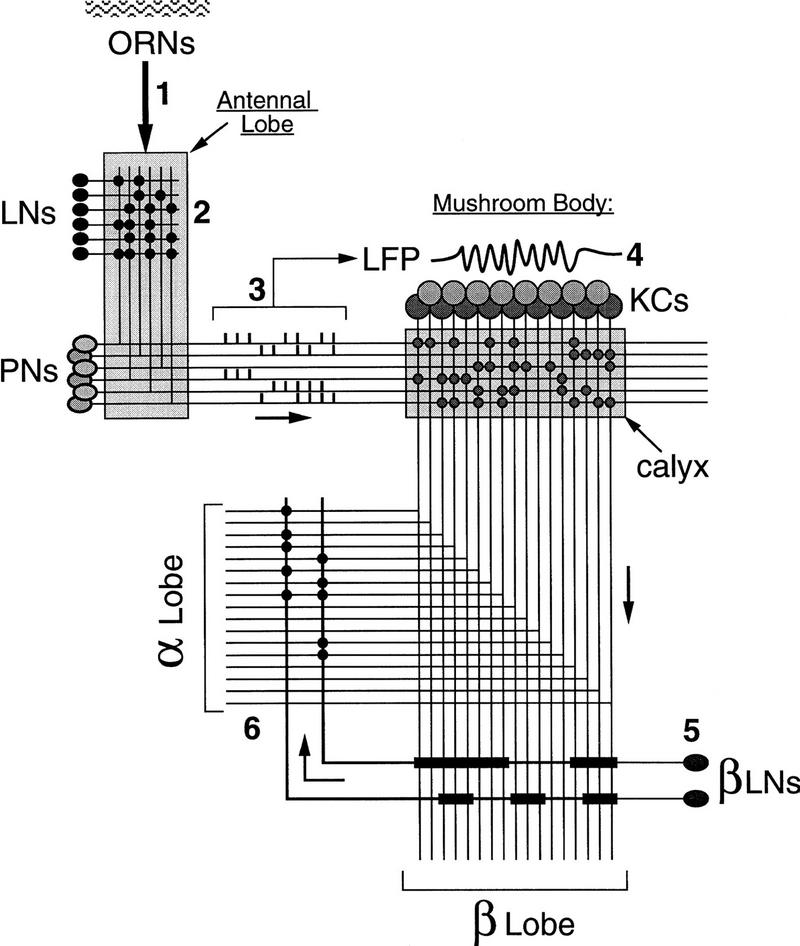Figure 1.

Circuit diagram of the olfactory pathway in the locust brain. Odors are transduced by arrays of olfactory receptor neurons (ORNs) in the antenna (1). ORNs activate ensembles of local and projection neurons (LNs and PNs) in the antennal lobe. LNs inhibit PNs (2) through a fast picrotoxin-sensitive GABAergic synapse. This inhibitory synapse is (at least in part) responsible for the oscillatory synchronization of the PNs activated by an odor. PNs responding to a given odor usually display specific and reliable slow temporal activity patterns (3), superimposed on these oscillatory responses. The patterns are neuron and odor specific. The coactivation of PNs during an odor response causes synchronized and rhythmic EPSPs in KCs, the intrinsic neurons of the mushroom bodies. These synchronized EPSPs can be detected as odor-evoked bouts of 20- to 30-Hz local field potential (LFP) oscillations (4) in the calyx. Arrays of KCs thus activated send action potentials down their axons to the alpha and beta lobes. In the beta lobe, the KCs contact beta lobe neurons (βLNs, 5), which send axonal collaterals to the alpha lobe (6).
